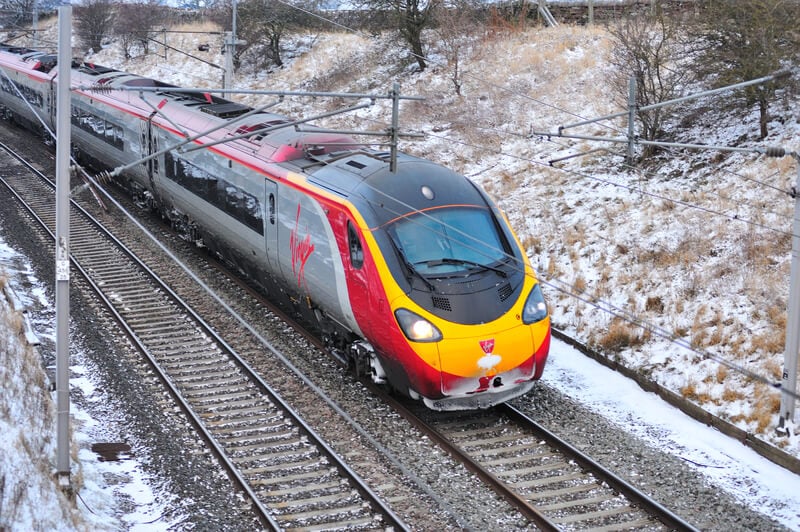For decades it’s been the center of a never-ending debate: would the US ever get serious about constructing a super high-speed rail network? It’s been evident for at least the past 2 of those decades that the US lags significantly behind Europe -- and especially China and Japan.
It was only when President Biden said “enough is enough” about debates, and he took a politically risky move to ensure that serious and long-term public monies finally got allocated for two major projects: one high-speed rail system connecting San Francisco and Los Angeles, and another from Los Angeles to Las Vegas.
Of course, concerns are always being raised regarding the rising costs associated with these projects.
Looking ahead to the next few years of rail system development in the US, two questions stand out:
-Does the country genuinely require a high-speed rail network?
-What are some of the most innovative proposed solutions that can help to ensure an affordable US deployment of a high-speed rail?
The US undoubtedly requires a high-speed rail network to address several pressing issues. To remain technologically and politically competitive, the country must keep pace with global transportation advancements.
The benefits from such a system are multifaceted, ranging from economic growth and environmental sustainability to enhanced mobility and connectivity.
Catalyst for economic development
A robust high-speed rail network can serve as a catalyst for economic development by facilitating the efficient movement of people and goods across the country. It can stimulate job creation, both directly through construction and operation, and indirectly by enabling businesses to expand their reach and access new markets.
The University of Illinois’ “High-Speed Rail Feasibility Study” for the State of Illinois Dept. of Transportation estimated the creation of 409,000 to 792,000 job-years during the construction phase, while also estimating the creation of 10,890 to 13,820 jobs per year during the first decade of operation.
High-speed rail attracts investment and spurs the growth of varied industries and businesses along its corridors
High-speed rail attracts investment and spurs the growth of varied industries and businesses along its corridors, leading to the revitalization of urban centers and the development of new economic hubs.
Transportation is a significant contributor to both greenhouse gas emissions and other kinds of air pollution. High-speed rail offers a more environmentally friendly alternative to air and road travel, as it produces significantly lower emissions per passenger-mile.
By reducing reliance on fossil fuel-powered modes of transportation, a high-speed rail network can play a crucial role in mitigating the impacts of climate change and improving air quality, particularly in densely populated urban areas.
Innovative solutions
The US is, of course, a geographically vast country, making efficient transportation essential for connecting diverse regions and communities. High-speed rail can provide a convenient and comfortable mode of travel, offering competitive journey times compared to air travel for distances up to 500 miles.
It can alleviate congestion on highways and at airports, reducing travel times and improving the overall quality of life for commuters and travelers alike.
 High-speed rail can provide a convenient and comfortable mode of travel, offering competitive journey times compared to air travel for distances up to 500 miles
High-speed rail can provide a convenient and comfortable mode of travel, offering competitive journey times compared to air travel for distances up to 500 miles
While the initial capital investment required for high-speed rail projects can be substantial, there are several innovative solutions that can help ensure a more affordable US deployment:
Public-Private Partnerships (PPPs): Leveraging private sector expertise and financing can help mitigate the financial burden on public entities. The University of Illinois IDOT study recommended exploring PPPs as a potential avenue for realizing high-speed rail projects. Successful examples of PPPs in transportation infrastructure projects are to be found in countries as varied as Canada, Australia, and the United Kingdom.
Incremental and Blended Approaches: Instead of pursuing a nationwide high-speed rail network simultaneously, an incremental or blended approach can be adopted. This involves upgrading existing rail infrastructure in phases, allowing for nearer-term transportation benefits while gradually improving intercity travel times and quality. Such an approach can reduce initial capital costs and facilitate a more manageable deployment.
Value Capture Mechanisms: Implementing value capture mechanisms, such as tax increment financing or special assessment districts, can help capture a portion of the increased property values and economic benefits generated by high-speed rail projects. These funds can then be reinvested into the infrastructure, reducing the reliance on public funding.
Innovative Financing Strategies: Exploring alternative financing strategies, such as green bonds, infrastructure investment funds, or public-private partnership models, can attract private capital and diversify funding sources for high-speed rail projects.
Technological Advancements: Embracing technological advancements in construction techniques, materials, and project management can help reduce costs and improve efficiency. For instance, the use of modular construction methods, advanced materials like carbon fiber reinforced polymers, and Building Information Modeling can streamline the construction process and optimize resource utilization.
Integrated Transportation Planning: Integrating high-speed rail into a comprehensive transportation plan that includes robust local and regional public transit systems can maximize the benefits and ridership of the network. This approach can enhance the overall efficiency and cost-effectiveness of the transportation system.
The US stands to gain significant economic, environmental, and mobility benefits from the development of a high-speed rail network. While the initial investment may be substantial, innovative solutions are emerging rapidly.
As the Biden team embraces these solutions, and as the states and their partners foster collaborative approaches amongst stakeholders, the US is overcoming the challenges -- and realizing the transformative potential of high-speed rail.